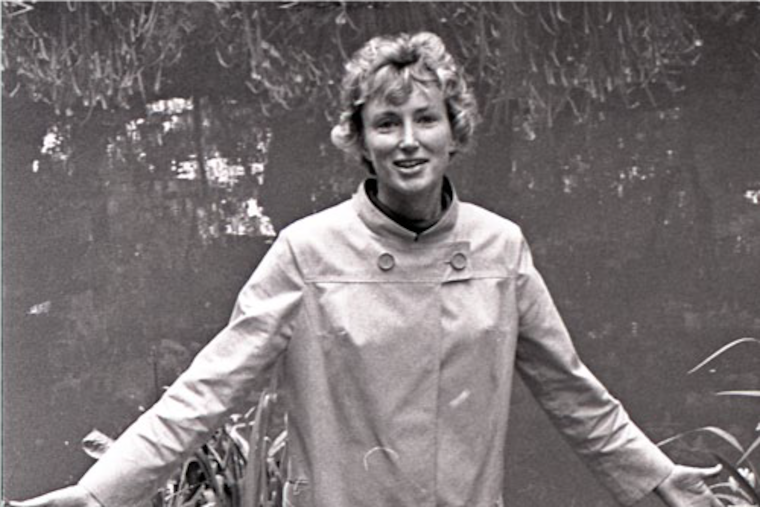Ann Louise Strong, 89, Penn professor who taught environmental law and regional planning
Professor Strong proposed using special laws to allow for growth while protecting the natural resources and beauty of an area. Then she ran into an obstacle: property owners.

Ann Louise Strong, 89, a professor who taught environmental law and regional planning during 34 years at the University of Pennsylvania’s Weitzman School of Design, died Sunday, Aug. 25, at Beaumont at Bryn Mawr.
Professor Strong, a former Devon resident, died of frailty at the senior facility where she had lived since 2006, said daughter-in-law Claire Strong.
Professor Strong graduated from Vassar College and Yale Law School at a time when few women aspired to become lawyers.
“She was one of the few females in her class at the Yale Law School,” her daughter-in-law said. “She was pretty remarkable.”
Professor Strong taught at Penn from 1959 to 1993, serving as chair of the department of city and regional planning, and associate dean of the design school. For most of that time, she taught environmental law, her signature course, to Penn students who hoped to become city and regional planners, landscape architects, and lawyers.
“She was a champion for using the law to advance decision-making about environmental quality,” wrote Design School Dean Frederick Steiner, a former student, in a 1993 tribute published in the Journal of Planning Education and Research. “It is no overstatement to say she helped create the fields of environmental law and environmental planning.”
Professor Strong was the author of six books, the editor of another, and in 1993, the first woman to receive the Distinguished Educator Award from the Association of Collegiate Schools of Planning.
She liked to collaborate with colleagues from different academic disciplines. One notable result was the innovative Brandywine Plan, which she and a team of planners, lawyers, and scientists created in 1970.
The plan used specially designed ecological regulations to encompass the Brandywine Valley’s projected growth while protecting its water and forest resources and natural beauty. But it meant that some property owners had to deed over lands to be held in a public trust, and that turned out to be a problem.
“It is a gripping story of an ambitious and visionary plan, which was endorsed by the community in principle but rejected in practice,” Steiner wrote.
Professor Strong returned to the topic in her 1975 Private Property and the Public Interest, The Brandywine Experience. She analyzed the difficulties in gaining political acceptance for innovative land-development rules in a community that placed a high value on private property rights.
In a third book, the 1979 Land Banking: European Reality, American Prospect, Professor Strong showed how the public purchase of land, to be held in reserve, had become commonplace in several Western European nations. Through the book, Professor Strong became an early pioneer in the use of purchasing and transferring development rights, Steiner wrote.
A stern taskmaster who used the Socratic Method to perfection, Professor Strong brooked no nonsense. Early in the semester, she assigned several judicial rulings to be learned by students. If, after calling on the students, no one could explain the rulings, she dismissed the class.
“This happened once a year,” Steiner wrote. “Every student came thoroughly prepared the rest of the semester.” Term papers were treated with equal precision. “I remember her detailed comments, thoughtful suggestions, and helpful corrections,” he wrote. “In many ways, Ann helped hone my writing skills.”
Born in Auburn, N.Y., she attended the public schools there. She met Michael Strong while both were students at Yale Law School. They married in 1954 and had two children.
They came to Philadelphia after hearing then-Mayor Richardson Dilworth, a Yale Law School graduate, give a speech. “We were impressed with Dilworth’s plans to revitalize the city,” Professor Strong told The Inquirer in 2012.
Professor Strong worked at the Philadelphia Housing Association with city official Dorothy Montgomery before joining the faculty at Penn.
In retirement, she served on a committee at Beaumont at Bryn Mawr, advocating “a green, sustainable vision" for the community, Steiner wrote.
Her husband died in 2012. In addition to her daughter-in-law, she is survived by son Mark; son Christopher and his wife, Terri; three grandchildren; and three great-grandchildren.
Plans for a memorial service later this fall were pending.
Memorial donations may be made to the Weitzman School of Design Annual Fund.